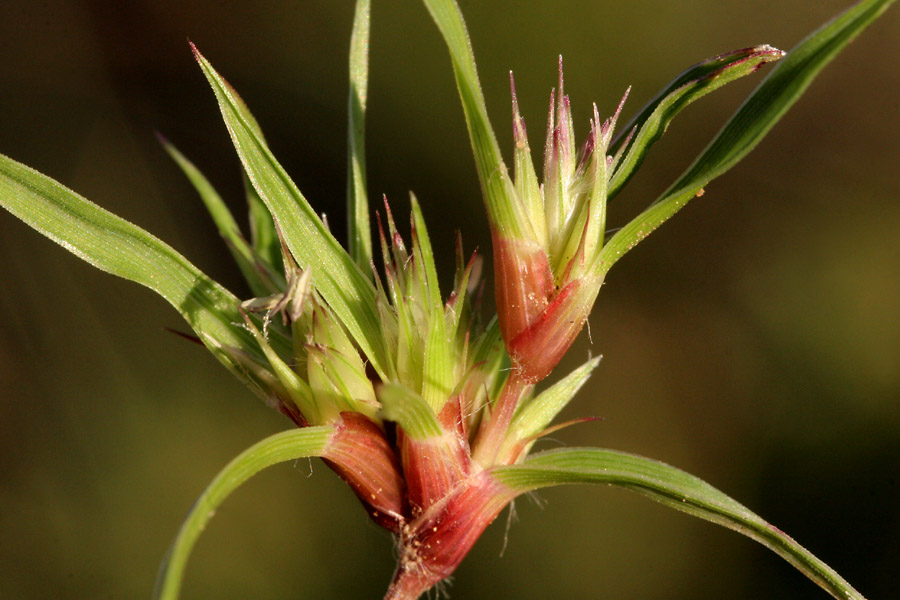Munroa
|
Family: Poaceae |
Plants annual; stoloniferous, mat-forming; stolons 2-8 cm, terminating in fascicles of leaves from which new culms arise. Culms 3-15(30) cm. Leaves mostly basal, sometimes with a purple tint; sheaths with a tuft of hairs at the throat; auricles absent; ligules of hairs; blades linear, usually involute, sometimes flat or folded, with white, thickened margins, apices sharply pointed. Inflorescences terminal, capitate panicles of spikelike branches; branches almost completely hidden in a subtending leafy bract, with 2-4 subsessile or pedicellate spikelets. Spikelets laterally compressed, with 2-10 florets; lower florets bisexual or pistillate; terminal florets sterile; disarticulation above the glumes or beneath the leaves subtending the branches. Glumes shorter than the spikelets, keeled, 1-veined, unawned; lower glumes usually present on all spikelets (absent from all spikelets in M. mendocina); upper glumes absent or reduced on the terminal spikelet; lemmas with a pilose tuft of hairs along the margins at midlength, membranous or coriaceous, 3-veined, lateral veins occasionally shortly excurrent, apices emarginate or 2-lobed; paleas glabrous, smooth; lodicules present or absent, truncate; anthers 2 or 3, yellow; style branches elongate, 2(3), barbellate. Caryopses dorsally compressed. x = 7 or 8. Named for Sir William Munro (1818-1880), a British botanist who collected in Barbados, the Crimea, and India. |

